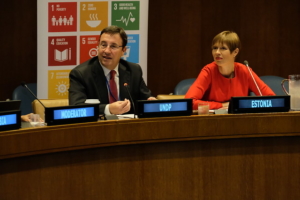8 Developing Countries Being Helped by the UNDP
 The United Nations Development Program (UNDP) is a U.N. network that aims to eliminate poverty, increase resilience in poor communities, improve access to education and develop policies in struggling countries. One of the UNDP’s major projects is the 2030 Agenda for Sustainable Development. This project focuses on 17 Sustainable Development Goals (SDGs) including no poverty, zero hunger, quality education, clean water and sanitation and climate action.
The United Nations Development Program (UNDP) is a U.N. network that aims to eliminate poverty, increase resilience in poor communities, improve access to education and develop policies in struggling countries. One of the UNDP’s major projects is the 2030 Agenda for Sustainable Development. This project focuses on 17 Sustainable Development Goals (SDGs) including no poverty, zero hunger, quality education, clean water and sanitation and climate action.
The UNDP works with multiple struggling countries around the globe to meet these goals. Out of the 170 countries and territories being aided, below is a list of eight countries being helped by the UNDP.
8 Developing Countries Being Helped by the UNDP
- Nigeria: Nigeria is home to the highest number of people in poverty in the world, making it one of the poorest countries being helped by the UNDP. Due to this, the UNDP’s main focus in Nigeria is eradicating poverty. Since a large percentage of the poor population are farmers, the UNDP is working to make agricultural progress in communities and addressing challenges faced in terms of sustainability. In addition, the UNDP is working to create more jobs and improve access to sustainable energy sources.
- Afghanistan: A large part of Afghanistan’s population faces issues with the quality of life. The UNDP in Afghanistan aims to fight extreme poverty and inequality for the most vulnerable. Significant progress has already been made in terms of education. In 2001, only 70,000 school-aged children in Afghanistan were attending school. Currently, eight million children are attending school. The UNDP worked with the Ministry of Economy in Afghanistan in 2015 to spread the importance of Sustainable Development Goals for the country.
- Nepal: Nepal is one of the poorest countries in Asia. Due in part to the UNDP’s efforts in Nepal, major progress has been made in terms of eliminating poverty. Within four years, the country has reduced the poverty rate from 25.2 percent in 2011 to 21.6 percent in 2015. Specific goals the UNDP has for Nepal include building resilience against natural disasters, improving education access and improving access to basic resources such as electricity and clean water.
- Côte d’Ivoire: Through the anti-poverty program that was established by the UNDP, more than a quarter of a million people’s lives have significantly improved in Côte d’Ivoire. Through this initiative, 62 community organizations received monetary donations, project funding and vocational training to help them progress and reach their goals. In terms of agricultural issues, due to this program, fishing equipment has become more easily available and affordable. In addition, crop diversity has increased, providing more income and food options.
- Syria: Syria is a war-torn, impoverished country. As a result, Syrian people face issues with access to basic needs. This includes housing, access to necessary services and basic needs for women and the disabled. In 2018, the UNDP introduced the UNDP-Syria Resilience Programme, that focuses on improving the livelihood of such vulnerable groups. Through this project, more than 2.8 million Syrians were able to receive aid and benefits. These interventions have also produced benefits on a larger scale, including the creation of jobs, productive assets distribution and vocational training.
- Thailand: A large percentage of Thailand’s population lives in rural areas. Major problems for the rural poor include human rights issues, considerable economic inequality and weak rule of law. In Thailand, the UNDP is supporting and providing aid to ongoing projects and operations dedicated to problems being faced by its citizens. A major program the UNDP is supporting is the Thailand Country Program which focuses on environmental regulation and economic development. The UNDP is also working with the Thai Royal Government.
- Bangladesh: One of the biggest problems faced by Bangladesh is natural disaster risk. The UNDP started a project in January 2017 which is an ongoing collaboration with the National Resilience Program, the government, the United Nations Office for Project Services (UNOPS) and U.N. Women. It aims to develop strategies to create lasting resilience against unpredictable natural disasters, shocks, and crisis, that strongly impact the poor community. Specific aims of the project include strengthening communities, improving recovery and response to disasters and local disaster management.
- The Philippines: Approximately 25 percent of the Philippines lives in poverty. The UNDP’s projects in the Philippines include development planning, policymaking and implementing sustainable practices. One of the main aims of the UNDP is to localize poverty reduction and increase community involvement. The UNDP is also going about development planning in a way that will include increasing the use of natural resources in a sustainable manner while reducing poverty.
– Nupur Vachharajani
Photo: Flickr
